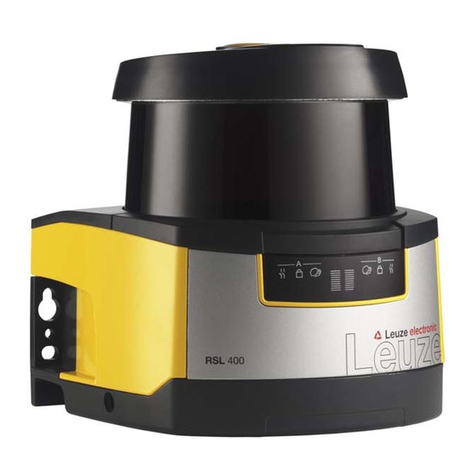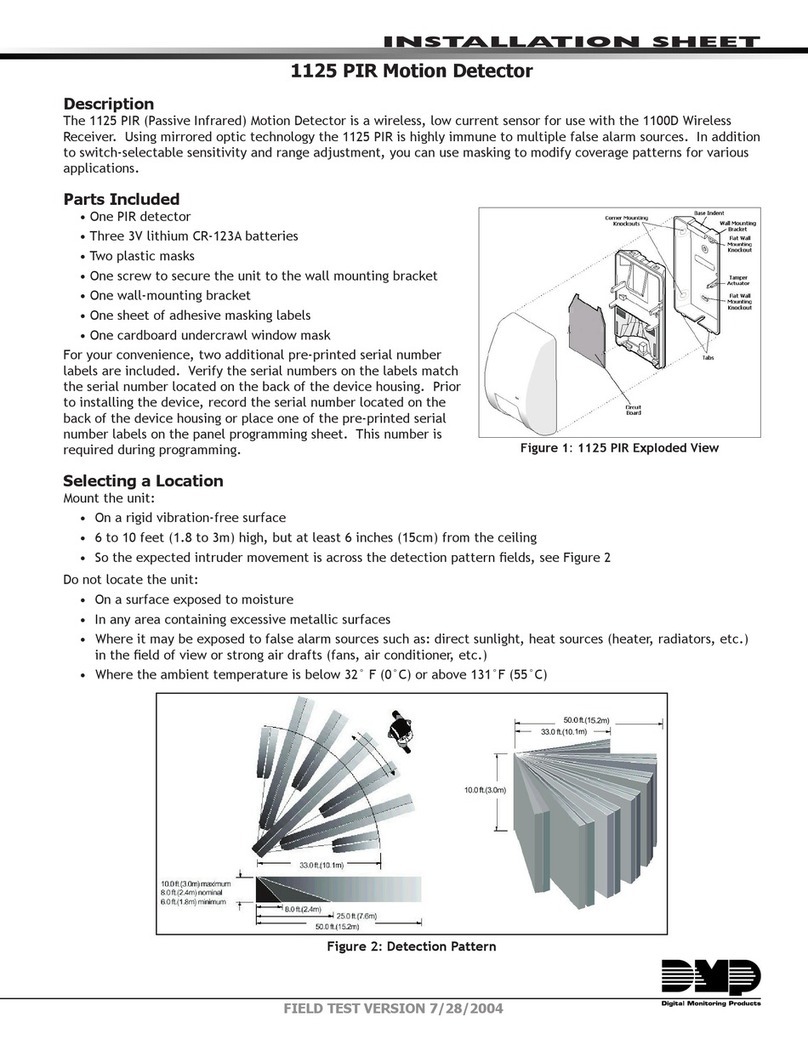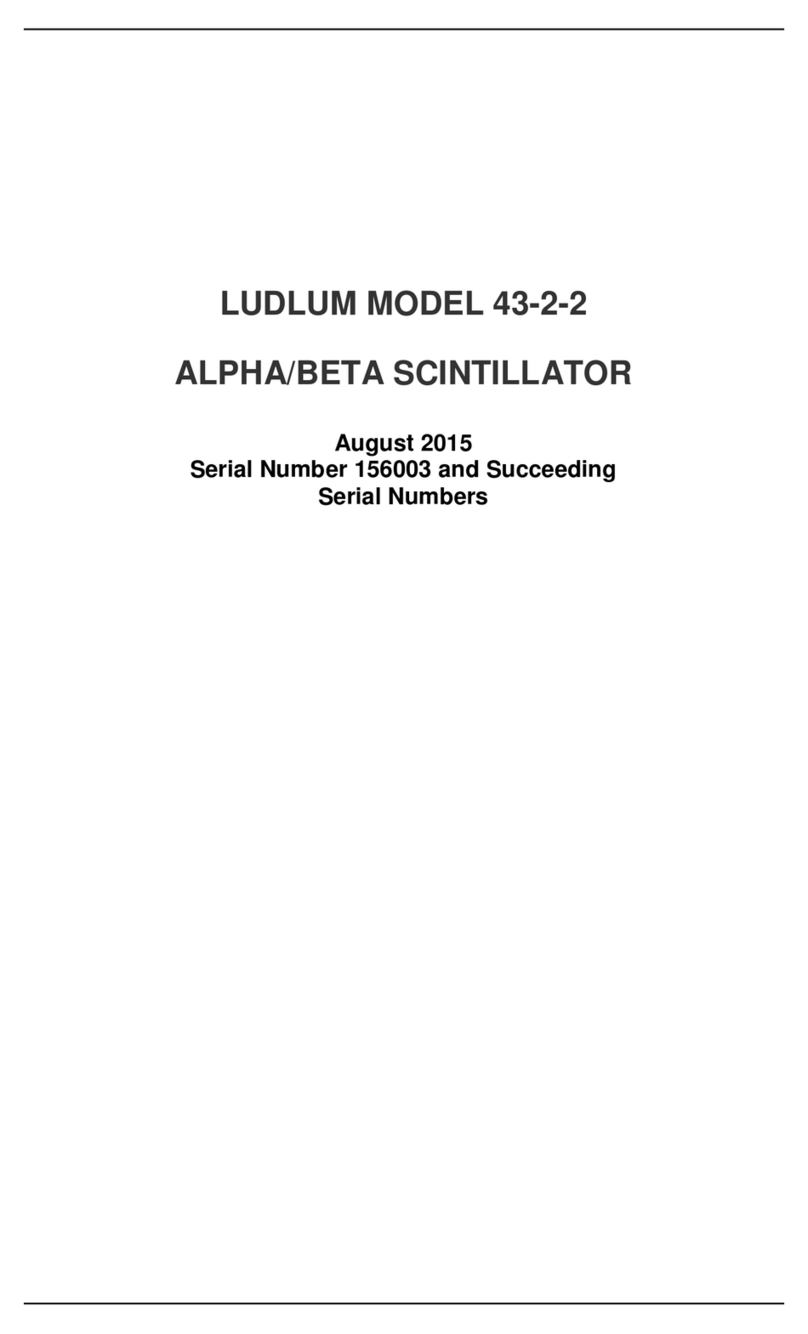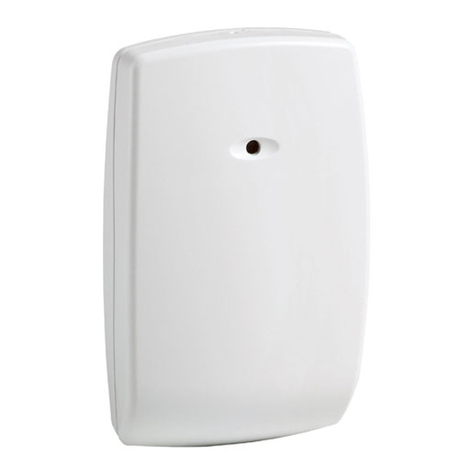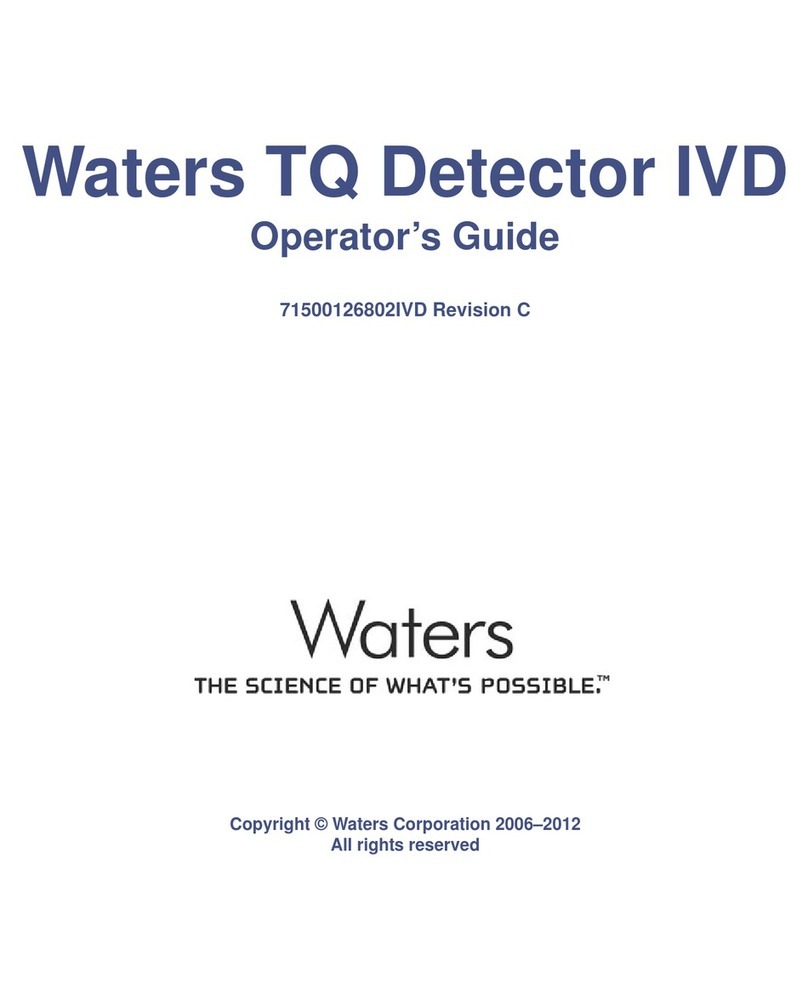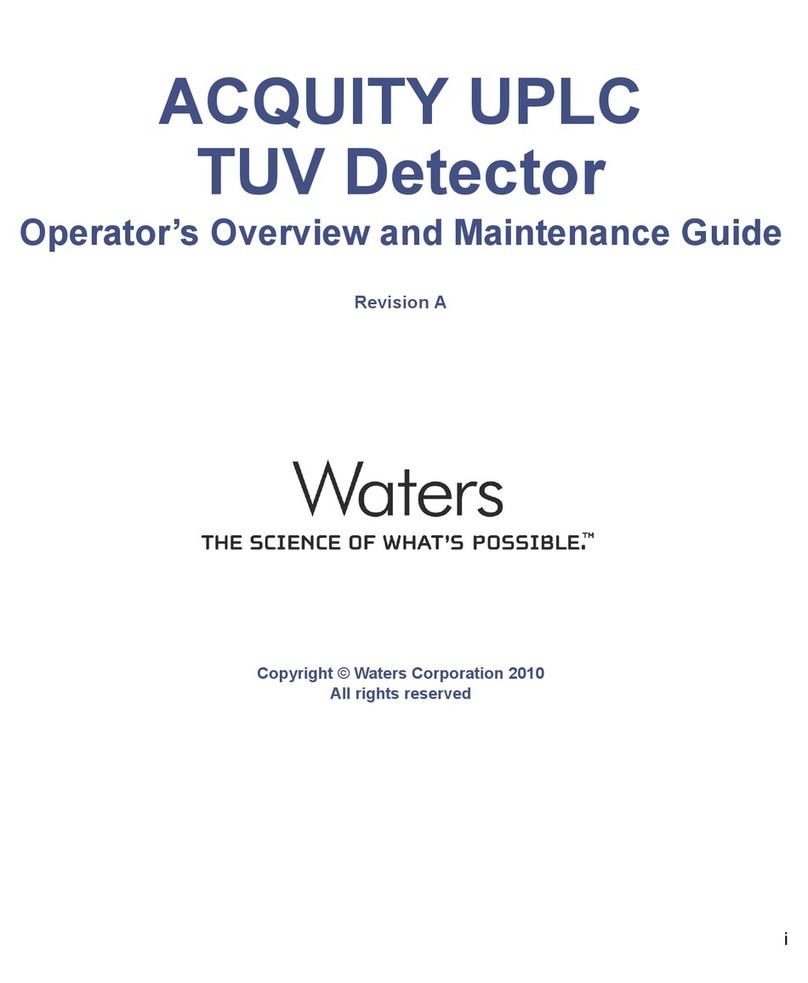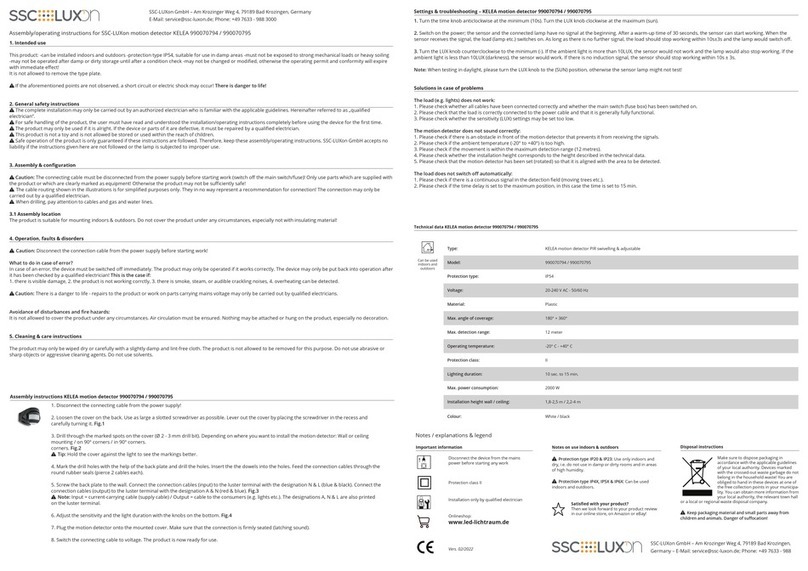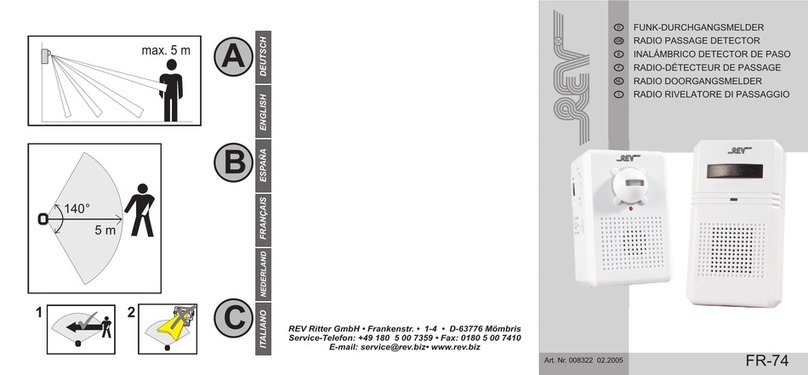
1-6 2424 ELS Detector Optics Principles
• Refraction-reflection scattering occurs for particles where >1.0. The
scattered light is proportional to D2, and the scattered signal is
proportional to c2/3.
• As a chromatographic peak elutes from a column, the concentration of
the analyte it represents changes. Concentration goes from near-zero at
the baseline to a maximum that corresponds to column efficiency,
injection volume, retention time, and concentration of the sample when
injected. From the maximum level, the concentration then returns to
near-zero. If the concentration is high enough, the diameter of a dry
analyte particle can vary through all three scattering regimes—
Rayleigh, Mie, and refraction-reflection scattering. It is this variance
that prevents linearity in ELS detection calibration plots over more than
one order of magnitude.
ELS detection limitations
Consider these limitations when implementing global ELS detection
separation methods:
• ELS detection lacks linearity over wide concentration ranges. When you
use the detector for assays, you may need to experiment with a variety of
“best fits” using linear, quadratic, and log-log responses for the
compounds of interest. You might also need to establish groupings for
expected concentration ranges.
• ELS detection is a destructive technique; the analyte is sacrificed to
generate the scattering particles. Ideally, therefore, the ELS detector
should be the final detector in a series. Alternatively, you can place the
ELS detector upstream of others, provided you split the column effluent
so that the ELS detector receives its own stream from the LC.
• Any particle can interfere with the sample signal, including particulates
in poor-grade chromatographic solvents because the detector responds
equally to all particulates. This lack of selectivity can cause problematic
background noise.
• The detector’s sensitivity to the particulates increases noise and,
consequently, signal-to-noise variation for a given method arising from
differences in the quality of mobile phases. Moreover, stationary phase
components can leach from the column and contribute particulates to
the sample flow.
D
λ
----



















